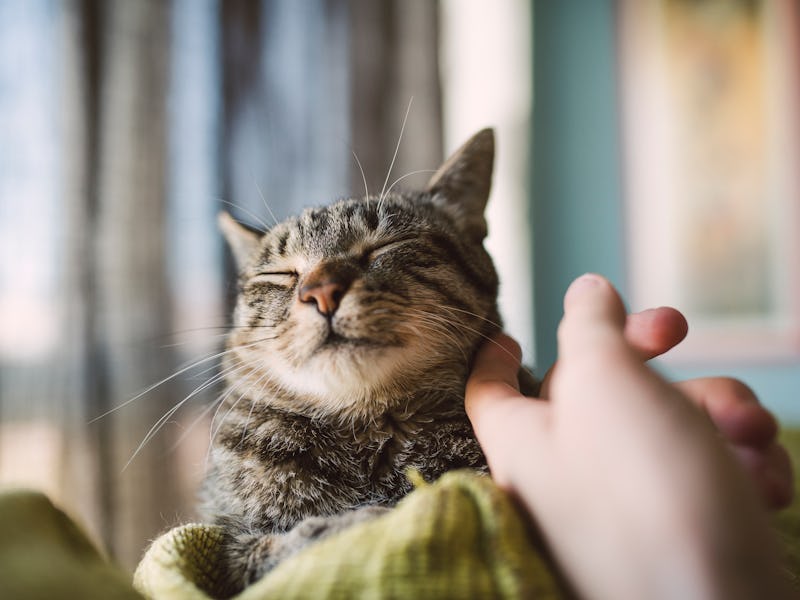How should you talk to your cat? A new study reveals a genius hack
It's the feline equivalent of baby talk.

Do you speak to your cat in a tone reserved solely for your pet? Researchers have a term for this cat equivalent of baby talk: “cat-directed speech,” and it turns out your pet is pretty good at picking up on it — well, sometimes.
In a recent study, scientists analyzed how well cats can discern between cat-directed speech and typical speech directed toward human adults. The findings offer a fascinating insight into your relationship with your pet. The research was published Tuesday in the journal Animal Cognition.
“Overall, increasing evidence brings us to consider the human-cat relationship as a close and valuable one,” write the study authors.
The context you need — Previous research has found that humans speaking to infants in infant-directed speech, or colloquially, “baby talk,” can help develop language skills and improves the bond between parent and child.
Since owners speak to their pets in a way that mimics baby talk — using increased and elevated pitch and repetitive, shorter phrases — it’s only natural to wonder if there’s a similar effect when owners speak to their furry friends in this manner.
First, researchers had to figure out whether pets could distinguish this pet-directed baby talk from other human speech. Previous research found that dogs prefer dog-directed speech to regular human talk, and it even improves the pups’ attention span. Despite this, there’s been little scientific attention devoted to how cats respond to this specific kind of speech.
Speaking to your feline using cat-directed speech — the pet equivalent of baby talk — may be helpful to developing the cat-human bond, research suggests.
What’s new — Two key findings emerged. First, scientists found cats can “discriminate speech specifically addressed to them from speech addressed to adult humans.” In other words: Mr. Whiskers understands, on some level, that your cooing is special and reserved only for them.
This finding wasn’t shocking per se, but the second result surprised even the researchers. Unlike dogs, the cats were unable to discern between these two kinds of speech patterns from strangers.
In other words: Don’t assume your cat will be able to pick up on the same speech cues from a stranger as their owner. It appears that a cat’s ability to understand speech specific to them hinges on whether or not they have an established relationship with that person.
The scientists speculate the reason may have to do with indoor cats' lack of exposure to strangers, unlike dogs, who frequently encounter strangers when on walks outdoors.
“Interestingly, this pattern of discrimination was found only when sentences were uttered by the cats’ owners,” write the researchers.
Why it matters — Contrary to popular belief, research shows that cats are not aloof beings who loathingly tolerate our company, but rather, they are creatures who have complex social interactions with humans.
According to the paper, these findings highlight “the importance of one-to-one relationships for indoor companion cats.”
The paper also offers unique insight into the communication styles that have helped form the cat-human relationship — a connection dating back thousands of years.
Ultimately, researchers suggest their findings provide “further evidence to encourage humans to consider cats as sensitive and communicative individuals.”
Contrary to popular belief, cats are not aloof creatures, but beings capable of complex social interactions, write the researchers.
How they did it — The researchers recruited nineteen indoor cats to participate in their study. All the cats were the pets of veterinary resident students. The authors acknowledged the study’s small sample size and the similarities in the professional background of the pet owners were potential limiting factors in the study. To avoid stressing the cats out by placing them in an unfamiliar environment, researchers conducted their experiments in the homes of the residents.
Scientists recorded owners speaking to their pets using cat-directed speech as well as talking to the researcher using adult-directed speech. They also recorded sixteen strangers calling the cat’s name. Afterward, researchers played back the speeches to the cats and compared their behavioral responses to each of the different scenarios.
Further statistical analysis of the behavioral responses allowed the researchers to conclude that cats can distinguish between the two types of speech from their owner but not from a stranger.
The Inverse analysis — For owners, the message is clear: Keep speaking to your pet in that loving, lyrical voice. Your cat likely understands and appreciates your efforts.